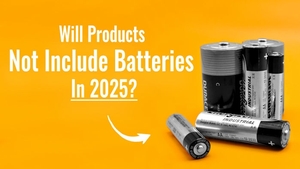Everyone knows of the prolific inventor Thomas Edison, but until recently, not many recognized the revolutionary contributions of Nikola Tesla. These two were bitter enemies whose outrageous rivalry would bring electricity and innovation to the world.

Everyone knows the father of the light bulb — Thomas Edison. In school we learn about him and all of his accomplishments, and he’s often remembered as the greatest inventor in American history. There’s a whole unit in school where Americans learn about Edison, but barely mentioned — and quickly forgotten — is Nikola Tesla.
In recent years, we hear the name Tesla all of the time, though most people associate it with the car company ran by Elon Musk. Before it was the name of a successful electric car company, it was the name of brilliant man who made electricity for the masses a reality. We are taught that this was actually the work of Edison, and he certainly played a role in the story, but we are missing a few key points where Tesla came into play. In reality, both men were accomplished inventors and visionaries, but they were also contemporaries and bitter rivals, both personally and scientifically.
Before we get into detail on their feud, it’s important to look at each man individually. They each led interesting lives that shaped the turn of the century.

The youngest of seven children, Thomas Edison was born in 1847 in Milan Ohio. After only 12 weeks in public school, his teacher deemed him too difficult, so he was homeschooled by his mother. By age 11, he showed an intense interest in learning a variety of things, and eventually began teaching himself. He showed business savvy by the age of 12 when he started selling his own newspapers to passengers on trains. It would be his time as a telegraph operator, though, that would give him the time and means to study and get familiar with electrical science.
He sold the rights to his first invention — an improved stock ticker — when he was only 22 for $40,000. With that money, he quit his job as a telegrapher to dedicate himself to inventing. He quickly became a well established inventor who created and improved upon devices for some of the biggest companies of the time. He wasn’t just an inventor, though, he was also a good businessman; he founded Edison Illuminating Company —which is a little company that we all know as General Electric these days.
Some of his inventions would create whole new industries, such creating a way to record sound with a phonograph and how to project moving pictures. These two inventions alone would change the entertainment industry forever.
Contrary to popular belief, the light bulb wasn’t actually Edison’s invention. Light bulbs had already been invented before he was even born; what he did was buy the patent and improve the design so that light bulbs could be brought to the masses. The incandescent light bulb would be revolutionary, but only if Edison could solve one giant problem — bringing electricity to the homes of America. No matter how revolutionary his design improvements to the light bulbs were, no one can use a light bulb if there is no way to plug it in.
Finding a way to bring electricity to homes everywhere is where “the current war” and Nikola Tesla would come in….

Born in 1856 in the Austrian Empire (known now as Croatia), Nikola Tesla inherited his love for electricity and inventing from his mother, who would make small household appliances in her spare time while he was growing up. Despite his father wanting him to follow in his footsteps and become an orthodox priest, Nikola went to school and studied engineering and physics. He developed an idea for an induction motor and a way to use alternating currents, but when no one in Europe was interested in his ideas, he decided to move to America, where the electricity boom was happening.
After arriving in the United States, Tesla sought out Edison and began working for him. They worked together for a short time, Tesla helping Edison to improve his inventions, but ultimately they ceased working together. Several reasons have been alluded to his leaving, but one thing was for sure — they disagreed on electrical currents (more on that later).
After some time working in manual labor jobs to get by, he finally got a chance to pitch his idea to investors. They backed him and he was able to found the Tesla Electric Company. Some big names backed Tesla during his time, such as J.P. Morgan and George Westinghouse.
Despite his successful inventions, like induction motors capable of controlling alternating currents, the Tesla coil, wireless technology, and others, Tesla’s fame and fortune was short lived. Even though he was a genius, he was not a great business man; unlike Edison who invented for the innovation as well as the fame and money, Tesla was more in it for the betterment of people’s lives. Because of this, though, he didn’t protect himself, and he died penniless and nearly forgotten, and it’s argued that his fall from fame was Edison’s fault.
Edison vs Tesla: The Current Wars

Edison and Tesla were both brilliant minds, and when brilliant minds have different ideas on what they think is the best way of doing things, a feud of epic proportions is bound to transpire. Other than clashing egos, there was a huge disparity in their philosophies on what was the most efficient way to bring electricity to the homes of the general public.
Edison, who was revered as the leader of the technological revolution at the time, was set on a direct current (DC) system. He believed that this was the only way to go, and that alternating currents — the system that Tesla was pitching — would be too dangerous and uncontrollable.
Tesla was positive that DC would never be efficient or strong enough, and his invention of the induction motor would help regulate and sustain the higher voltages.
Rather than work together with Tesla to see if his ideas were viable, Edison instead refused the idea and drove him away. When Tesla found investors who believed in his tech and he began to gain attention and fame, Edison set out to defame and discredit Tesla with a smear campaign. During this, he used his high-voltage systems to demonstrate in public on dogs and other animals that AC was too dangerous and deadly; when a prison came to Edison for a new way to execute prisoners on death row, he suggested they use the high voltage AC, which resulted in the first ever electric chair execution — and it was terribly unsuccessful.
While all of Edison’s campaigning left Tesla and his investors hurting, in the end Tesla’s AC system was chosen. He even was able to create the first hydroelectric power plant using Niagara Falls. Most of the electrical grid still runs on Tesla’s AC system to this day, though in this most recent tech boom, newer systems are undoubtedly being worked by scientists and engineers.
The Legacies of Edison and Tesla

Without both Tesla and Edison, who knows what the world would be like today. They were both integral to the electricity and technology boom at the turn of the century, and their contributions forever change our world. Other than just the electricity leaps and bounds they made, they both contributed other world-changing inventions, like Edison and his contributions to the entertainment industry with the invention of project film and recording sound, and Tesla with his work on wireless communication and radio signals.
Though Edison has gotten plenty of recognition and praise while he was alive and since death, Tesla is now beginning to get the acknowledgement and acclaim he deserved for his brilliance all these years. In addition to the namesake Tesla Motors, there is even a light bulb called “Finally” in honor of Tesla and his inventions. These days, Edison’s incandescent light bulb is fairly inefficient compared to more recent creations, but if you still love the style, you can definitely get an Edison style LED light bulb for the best of both worlds — classic looks and eco friendly function.
As more hard-core Tesla supporters advocate for him to get recognition for his contributions, we are bound to see an uptick of younger generations who know who he is and what he did. His worked changed how humans live their daily lives, as did Edison’s, and without both of them, we might still be in the dark.





